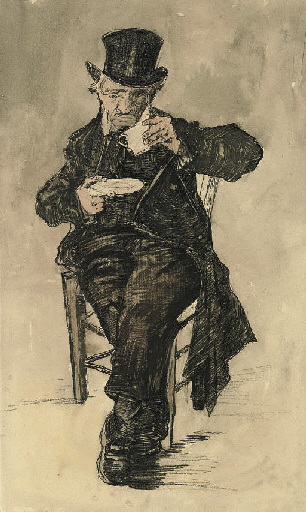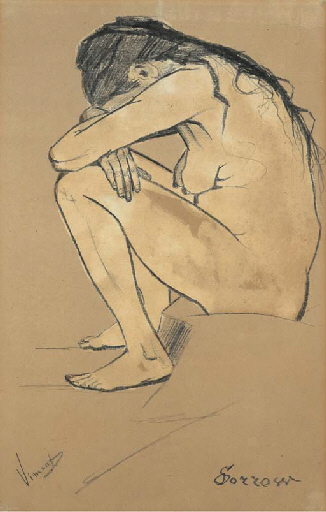ARTCURIAL
Sale Modern & Contemporary Art I - 04 june 2018
Vincent VAN GOGH 1853 - 1890
Raccommodeuses de filets dans les dunes - Août 1882
Huile sur papier épais préparé, marouflé sur panneau parqueté
h: 42 w: 62,50 cm
Provenance : 1882-1885
Vincent Van Gogh, La Haye, Nuenen
1885-1886
Anna Cornelia Carbentus-Van Gogh,mère de l'artiste, Nuenen, Breda
1886-1902
Adrianus Schrauwen, Breda
1902
Johannis Cornelius Couvreur, Breda
1902-1903
Kees Mouwen et Willem Van Bakel, Breda
1903-1904
Oldenzeel, Rotterdam
1904-1996
Gerlach Ribbius Peletier puis par descendance, Utrecht, Doorn, Cologne-
Mariënburg, Toronto
1996-2018
Collection particulière européenne
En prêt longue durée
Gemeentemuseum, La Haye, 1961-1974
Musée des Beaux-Arts, Montréal, 2007-2010
Musée Van Gogh, Amsterdam, 2011-2018
Expositions : Essen, Villa Hügel, Vincent Van Gogh–Leben und Schaffen.
Dokumentation,Gemälde, Zeichnungen, octobre-décembre 1957, n°142
Martigny, Fondation Pierre Gianadda, Van Gogh, juin-novembre 2000, n°4 pp. 152, 256 et 286 du catalogue, reproduit en couleurs p. 152 du
catalogue Montréal, Musée des Beaux-Arts,
Pour l'art !, décembre 2007–mars 2008,
n°86 p. 78, reproduit en couleurs p. 79
Rome, Complesso del Vittoriano Vincent Van Gogh: campagna senza tempo, citta moderna, octobre
2010-février 2011, n°10230, reproduit en couleurs pp. 88 (détail) et 109, reproduit en noir et blanc p. 230
Amsterdam, Musée Van Gogh, Van Gogh à l'oeuvre, mai 2013-janvier 2014, n°51, reproduit en couleurs p. 53
Exposition permanente, 2014-2017 Denver, Denver Art Museum, Becoming
Van Gogh, octobre 2012-janvier 2013, n°22 pp. 30, 94, 243 reproduit en couleurs pp. 31 (détail), 95, 158
Bibliographie : Vincent Van Gogh, 40 photocollographies d'après des tableaux et dessins, W. Versluys, Amsterdam, circa 1905, reproduit en noir et blanc n°15
K. Pfister, Van Gogh. Sein Werk, Gustav Kiepenheuer Verlag, Potsdam, 1922, pl.1
J.-B. de la Faille, L'oeuvre de Vincent Van Gogh - Catalogue raisonné, Les Éditions G. Van Oest, Paris, Bruxelles, 1928, n°7 p.13, tome I, reproduit en
noir et blanc pl. III, tome 2
J. Van Gogh, Vincent Van Gogh: Brieven aan zijn broeder, Maatschappij voor goede & goedkoope, Amsterdam, 1934, tome I, lettre 227 p. 517
W. Vanbeselaere, De hollandsche periode (1880-1885) in het werk van Vincent van Gogh, De Sikkel, Anvers, 1937, pp. 111, 156 et 413
Van Gogh, Catalogue - Exposition internationale de 1937, L'amour de l'art, Denoël, Paris, 1937, n°215,
reproduit en noir et blanc p. 39 (la photographie de l'oeuvre était exposée)
J-B de la Faille, Vincent Van Gogh, Éditions Hypérion, Paris, 1939, n°11 (F.7), reproduit en noir et blanc p. 40
V.W. Van Gogh, G. Charensol, Correspondance complète de Vincent Van Gogh, Gallimard-Grasset, Paris, 1960, lettre 227 p. 449
J.-B. de la Faille, The Works of Vincent Van Gogh: His Painting and Drawings, Meulenhoff International,
Amsterdam, 1970, n° F7(H11) reproduit en noir et blanc p. 44
P. Lecaldano, Tout l'oeuvre peint de Van Gogh I 1881-1888, Rizzoli, Milan, Les classiques de l'art, Flammarion, Paris, 1971, n°8, reproduit en noir et
blanc (non paginé)
J.Hulsker, The Complete Van Gogh: Paintings, Drawings, Sketches, Abrams,
New York, 1980, n°178 pp. 47 et 56, reproduit en noir et blanc p.47
Van Gogh Museum, J. Hulsker, De Brieven van Vincent Van Gogh, Van Gogh Museum, Amsterdam, 1990, lettre 260
M. van der Mast, C. Dumas, Van Gogh en Den Haag, Waanders, Zwolle, 1990, catalogue de l'exposition du Haags Historisch Museum, La Haye, septembre-novembre 1990, n°81, reproduit en noir
et blanc p. 81
J. Hulsker, Vincent Van Gogh. A guide to his work and letters, Van Gogh Museum, Amsterdam, 1993, n°178(7) p. 35
I.E. Walther, R. Metzger, Vincent Van Gogh, Sämtliche Gemälde, Band I, Benedikt Taschen Verlag, Cologne, 1993, reproduit en noir et blanc p.17
L. van Tilborgh, M. Vellekoop, Van Gogh in Utrecht: the collection of Gerlach Ribbius Peletier (1856-1930),
in Van Gogh Museum Journal 1997-1998, Amsterdam, n°5 pp. 32, 34 et 37, reproduit en noir et blanc p. 37
J.Hulsker, The New Complete Van Gogh:Paintings, Drawings, Sketches – Revised and enlarged edition of the Catalogue raisonné, J.M Meulenhoff, Amsterdam, John Benjamins, Philadelphie, 1996, n°178 pp. 46 et 56, reproduit en noir et blanc p.47
L. Jansen, H. Luijten, N. Bakker, Vincent Van Gogh - Les lettres, Acte Sud, Van Gogh Museum, Huygens
Institute, Amsterdam, Arles, 2009, cité dans la lettre n°258 du 20 août 1882, tome 2 pp. 138 à 142, n°[2] p.
141 et tome 6 p.123, reproduit en couleurs p. 141 tome 2
Commentaire : Oil on prepared thick paper laid down on cradled panel
Estimation 3 000 000 - 5 000 000 €
Sold 7,065,000 €

Among the sale’s leading works is Vue de l’asile et de la Chapelle de Saint-Rémy, 1889, by Vincent van Gogh (estimate in the region of $35 million) – formerly in the collection of Elizabeth Taylor. Taylor’s father, art dealer Francis Taylor, purchased the painting on her behalf in 1963 at auction for £92,000.
Approximately one month after depicting Laboureur dans un champ, which nearly eclipsed the artist’s record in November, Vincent painted Vue de l’asile et de la Chapelle de Saint-Rémy. Unlike the canvas of the ploughman, which had been rendered indoors and from memory, he painted the chapel en plein air.
This luminous painting was included in several of Van Gogh’s most important early exhibitions. These groundbreaking shows, including the 1905 retrospective at the Stedelijk Museum in Amsterdam, were instrumental in the formation of his posthumous reputation. Having seen this painting in the landmark 1905 Van Gogh retrospective at the Stedelijk Museum in Amsterdam, Paul Cassirer, the leading German gallerist of the time, placed it immediately afterwards in his own traveling exhibition, which alerted the German public, art critics, historians, and contemporary painters alike to the achievement of an artist who was rapidly achieving legendary status.

In November 2017, Van Gogh’s Laboureur dans un champ, from the collection of Nancy Lee and Perry R. Bass, realized $81.3 million against its original estimate of $50 million, just shy of the auction record for the artist.

Vincent Van Gogh (1853-1890), Laboureur dans un champ, St Remy 1889. Estimate on Request.
On mornings between 9 May 1889 and 16 May 1890, Van Gogh rose from bed and gazed through his window; the world outside appeared to him much like it does in this painting. Each morning the spectacle of the ascending sun would exhilarate and inspire him. The artist began this painting of a ploughman tilling the plot of land through his window in late August 1889 and completed it on 2 September. This was a significant development for Van Gogh, who had not handled his brushes since being removed from his studio by the doctors at the asylum of Saint-Paul-de-Mausole following a devastating psychological episode.
An attack of this magnitude had last occurred in Arles on 23 December 1888, following a violent argument with Paul Gauguin in the small “Yellow House” they had shared for the previous two months. The argument led him to sever the larger part of his upper left ear.
The artist referred to Laboureur dans un champ in his letter to his brother Theo dated on or around 2 September: “Yesterday I started working again a little—a thing I see from my window—a field of yellow stubble which is being ploughed, the opposition of the purplish ploughed earth with the strips of yellow stubble, background of hills. Work distracts me infinitely better than anything else, and if I could once again really throw myself into it with all my energy that might possibly be the best remedy.” The image of the horse and ploughman is repeated in only one other Saint-Rémy painting, a related version but with variant motifs, which Vincent painted later in September.
Christie's 2017
Vincent van Gogh’s Le moissonneur (1889, estimate £12,500,000-16,500,000) is one of a series of ten works executed after Jean-François Millet’s Les travaux des champs – seven of which are in the Van Gogh Museum in Amsterdam – described by his brother Theo as “perhaps the finest things you’ve done.”
Painted at Saint-Rémy in September 1889 at a critical moment in the penultimate year of Vincent van Gogh’s life, Le moissonneur (d’après Millet) pays homage to the artist whom he most admired and respected: Jean-François Millet. Charged with intense colour and electrifying brushwork, this painting dates from the beginning of one of the most prolific periods of Van Gogh’s career, a stage that saw an almost miraculous outpouring of work in the midst of the artist’s episodic yet ever-increasing mental breakdowns that punctuated the final years of his life.
Le Moissonneur (d’après Millet) is one of ten paintings that Van Gogh made after a series of drawings by Jean-François Millet entitled Les Travaux des Champs (1852), seven of which now reside in the Van Gogh Museum, Amsterdam, with the other two in private hands. The work of Millet became a major focus for Van Gogh during this period, following the gift of a set of engravings of Millet’s Les Travaux des Champs by Jacques-Adrien Lavielle that was sent to Van Gogh from his brother Theo van Gogh the same year. Le Moissonneur (d’après Millet), employs the composition of Millet but is filled with Van Gogh’s own dramatic and intense use of colour. With his back to the viewer, bent over as he works the fields, the male figure is illuminated against the deep blue sky and golden yellow fields.
Sotheby's November 4, 2014
LOT SOLD. 61,765,000 USD
Sotheby’s will offer Vincent van Gogh’s Still Life, Vase with Daisies and Poppies in its Evening Sale of Impressionist & Modern Art in New York on November 4, 2014. Painted at the home of Dr. Paul Gachet just weeks before the end of Van Gogh’s life, the artist uses the richly-colored bouquet of wildflowers to convey his psychological state at the time – a hallmark of the Expressionist icon. The resulting composition teems with the intense energy, emotion and sensitivity of this creative genius at the height of his short but renowned career. Still Life is one of the few works that Van Gogh sold during his lifetime, and is one of only a handful of great works by the artist to appear at auction in recent decades. The painting comes to auction this November with a pre-sale estimate of $30/50 million.
Simon Shaw, Co-Head of Sotheby’s Worldwide Impressionist & Modern Art Department, commented: “Still Life, Vase with Daisies and Poppies radiates the exuberance and passion found in Van Gogh’s greatest and most coveted works. The vibrant composition captures in sharp relief the intensity of the artist at the height of his mania, only weeks before his tragic end. Still Life has remained in the same private collection for more than two decades, which adds again to its appeal for today’s market. We are privileged to present it to collectors across the globe this autumn.”
Vincent van Gogh painted the present work in June of 1890 in Auvers-sur Oise, the town where he settled following his release from the asylum at St-Rémy that May. Renting a room at the local Ravoux Inn, he spent his days setting up his easel in the fields to paint the scenes of the lush countryside, as well as visiting with his physician, Dr. Gachet.
Still Life was painted at Dr. Gachet's house and presumably came immediately into his possession upon completion. The viewer can imagine Van Gogh walking through the fields on his way to Gachet's, gathering up armfuls of poppies, daisies, cornflowers and sheaves of wheat to squeeze into one of the doctor’s modest vases. In comparison with the more reserved and academic still-lifes that he had completed in Paris in the mid-1880s, the present work evinces a dramatic shift in Van Gogh’s painterly style, characterized by a frenetic energy. The artist was flooded with anxiety in Auvers, and this agitation spilled over onto even his most optimistic canvases. It is in these same fields that Van Gogh would attempt to take his own life, only weeks after painting this work.
Whether Van Gogh gave Still Life to Dr. Gachet in exchange for medical consultation is unknown, but he was certainly dependent upon his brother Theo for money and art supplies at the end of his life. Van Gogh was eager to show his brother – an art dealer – that he could support himself, and he believed that his still lifes would be the most saleable of his compositions.
Still Life is one of the very few paintings sold during Van Gogh’s lifetime. It was acquired by Gaston Alexandre Camentron, a noted collector of Impressionist pictures, who eventually sold it to Paul Cassirer Gallery in 1911. Still Life remained with a series of private collectors in Germany until the mid-1920s, when it made its way to London and eventually to New York – one of the earliest works by the artist to enter the United States – where it was sold by the Knoedler Gallery in 1928 to A. Conger Goodyear. Known as one of the principle founders of the Museum of Modern Art, Goodyear kept this work in his family's private collection. It was eventually gifted in part by the Goodyears to the Albright-Knox Art Gallery in Buffalo, where it was on display for over 30 years before it was sold at the request of the family.
Sotheby’s Impressionist and Modern Art in London December 7, 1999
Sale Modern & Contemporary Art I - 04 june 2018
Raccommodeuses de filets dans les dunes - Août 1882
Huile sur papier épais préparé, marouflé sur panneau parqueté
h: 42 w: 62,50 cm
Provenance : 1882-1885
Vincent Van Gogh, La Haye, Nuenen
1885-1886
Anna Cornelia Carbentus-Van Gogh,mère de l'artiste, Nuenen, Breda
1886-1902
Adrianus Schrauwen, Breda
1902
Johannis Cornelius Couvreur, Breda
1902-1903
Kees Mouwen et Willem Van Bakel, Breda
1903-1904
Oldenzeel, Rotterdam
1904-1996
Gerlach Ribbius Peletier puis par descendance, Utrecht, Doorn, Cologne-
Mariënburg, Toronto
1996-2018
Collection particulière européenne
En prêt longue durée
Gemeentemuseum, La Haye, 1961-1974
Musée des Beaux-Arts, Montréal, 2007-2010
Musée Van Gogh, Amsterdam, 2011-2018
Expositions : Essen, Villa Hügel, Vincent Van Gogh–Leben und Schaffen.
Dokumentation,Gemälde, Zeichnungen, octobre-décembre 1957, n°142
Martigny, Fondation Pierre Gianadda, Van Gogh, juin-novembre 2000, n°4 pp. 152, 256 et 286 du catalogue, reproduit en couleurs p. 152 du
catalogue Montréal, Musée des Beaux-Arts,
Pour l'art !, décembre 2007–mars 2008,
n°86 p. 78, reproduit en couleurs p. 79
Rome, Complesso del Vittoriano Vincent Van Gogh: campagna senza tempo, citta moderna, octobre
2010-février 2011, n°10230, reproduit en couleurs pp. 88 (détail) et 109, reproduit en noir et blanc p. 230
Amsterdam, Musée Van Gogh, Van Gogh à l'oeuvre, mai 2013-janvier 2014, n°51, reproduit en couleurs p. 53
Exposition permanente, 2014-2017 Denver, Denver Art Museum, Becoming
Van Gogh, octobre 2012-janvier 2013, n°22 pp. 30, 94, 243 reproduit en couleurs pp. 31 (détail), 95, 158
Bibliographie : Vincent Van Gogh, 40 photocollographies d'après des tableaux et dessins, W. Versluys, Amsterdam, circa 1905, reproduit en noir et blanc n°15
K. Pfister, Van Gogh. Sein Werk, Gustav Kiepenheuer Verlag, Potsdam, 1922, pl.1
J.-B. de la Faille, L'oeuvre de Vincent Van Gogh - Catalogue raisonné, Les Éditions G. Van Oest, Paris, Bruxelles, 1928, n°7 p.13, tome I, reproduit en
noir et blanc pl. III, tome 2
J. Van Gogh, Vincent Van Gogh: Brieven aan zijn broeder, Maatschappij voor goede & goedkoope, Amsterdam, 1934, tome I, lettre 227 p. 517
W. Vanbeselaere, De hollandsche periode (1880-1885) in het werk van Vincent van Gogh, De Sikkel, Anvers, 1937, pp. 111, 156 et 413
Van Gogh, Catalogue - Exposition internationale de 1937, L'amour de l'art, Denoël, Paris, 1937, n°215,
reproduit en noir et blanc p. 39 (la photographie de l'oeuvre était exposée)
J-B de la Faille, Vincent Van Gogh, Éditions Hypérion, Paris, 1939, n°11 (F.7), reproduit en noir et blanc p. 40
V.W. Van Gogh, G. Charensol, Correspondance complète de Vincent Van Gogh, Gallimard-Grasset, Paris, 1960, lettre 227 p. 449
J.-B. de la Faille, The Works of Vincent Van Gogh: His Painting and Drawings, Meulenhoff International,
Amsterdam, 1970, n° F7(H11) reproduit en noir et blanc p. 44
P. Lecaldano, Tout l'oeuvre peint de Van Gogh I 1881-1888, Rizzoli, Milan, Les classiques de l'art, Flammarion, Paris, 1971, n°8, reproduit en noir et
blanc (non paginé)
J.Hulsker, The Complete Van Gogh: Paintings, Drawings, Sketches, Abrams,
New York, 1980, n°178 pp. 47 et 56, reproduit en noir et blanc p.47
Van Gogh Museum, J. Hulsker, De Brieven van Vincent Van Gogh, Van Gogh Museum, Amsterdam, 1990, lettre 260
M. van der Mast, C. Dumas, Van Gogh en Den Haag, Waanders, Zwolle, 1990, catalogue de l'exposition du Haags Historisch Museum, La Haye, septembre-novembre 1990, n°81, reproduit en noir
et blanc p. 81
J. Hulsker, Vincent Van Gogh. A guide to his work and letters, Van Gogh Museum, Amsterdam, 1993, n°178(7) p. 35
I.E. Walther, R. Metzger, Vincent Van Gogh, Sämtliche Gemälde, Band I, Benedikt Taschen Verlag, Cologne, 1993, reproduit en noir et blanc p.17
L. van Tilborgh, M. Vellekoop, Van Gogh in Utrecht: the collection of Gerlach Ribbius Peletier (1856-1930),
in Van Gogh Museum Journal 1997-1998, Amsterdam, n°5 pp. 32, 34 et 37, reproduit en noir et blanc p. 37
J.Hulsker, The New Complete Van Gogh:Paintings, Drawings, Sketches – Revised and enlarged edition of the Catalogue raisonné, J.M Meulenhoff, Amsterdam, John Benjamins, Philadelphie, 1996, n°178 pp. 46 et 56, reproduit en noir et blanc p.47
L. Jansen, H. Luijten, N. Bakker, Vincent Van Gogh - Les lettres, Acte Sud, Van Gogh Museum, Huygens
Institute, Amsterdam, Arles, 2009, cité dans la lettre n°258 du 20 août 1882, tome 2 pp. 138 à 142, n°[2] p.
141 et tome 6 p.123, reproduit en couleurs p. 141 tome 2
Commentaire : Oil on prepared thick paper laid down on cradled panel
Estimation 3 000 000 - 5 000 000 €
Sold 7,065,000 €
May 15, 2018: Christie’s Sale of Impressionist and Modern Art
On May 15, Christie’s Evening Sale of Impressionist and Modern Art will be underscored by exceptional works by the market’s most sought after artists. Highlights will include paintings by Vincent Van Gogh, Fernand Léger and Mark Chagall, all of whom experienced breakthrough results in November 2017.

Among the sale’s leading works is Vue de l’asile et de la Chapelle de Saint-Rémy, 1889, by Vincent van Gogh (estimate in the region of $35 million) – formerly in the collection of Elizabeth Taylor. Taylor’s father, art dealer Francis Taylor, purchased the painting on her behalf in 1963 at auction for £92,000.
Approximately one month after depicting Laboureur dans un champ, which nearly eclipsed the artist’s record in November, Vincent painted Vue de l’asile et de la Chapelle de Saint-Rémy. Unlike the canvas of the ploughman, which had been rendered indoors and from memory, he painted the chapel en plein air.
This luminous painting was included in several of Van Gogh’s most important early exhibitions. These groundbreaking shows, including the 1905 retrospective at the Stedelijk Museum in Amsterdam, were instrumental in the formation of his posthumous reputation. Having seen this painting in the landmark 1905 Van Gogh retrospective at the Stedelijk Museum in Amsterdam, Paul Cassirer, the leading German gallerist of the time, placed it immediately afterwards in his own traveling exhibition, which alerted the German public, art critics, historians, and contemporary painters alike to the achievement of an artist who was rapidly achieving legendary status.

In November 2017, Van Gogh’s Laboureur dans un champ, from the collection of Nancy Lee and Perry R. Bass, realized $81.3 million against its original estimate of $50 million, just shy of the auction record for the artist.

Vincent Van Gogh (1853-1890), Laboureur dans un champ, St Remy 1889. Estimate on Request.
On mornings between 9 May 1889 and 16 May 1890, Van Gogh rose from bed and gazed through his window; the world outside appeared to him much like it does in this painting. Each morning the spectacle of the ascending sun would exhilarate and inspire him. The artist began this painting of a ploughman tilling the plot of land through his window in late August 1889 and completed it on 2 September. This was a significant development for Van Gogh, who had not handled his brushes since being removed from his studio by the doctors at the asylum of Saint-Paul-de-Mausole following a devastating psychological episode.
An attack of this magnitude had last occurred in Arles on 23 December 1888, following a violent argument with Paul Gauguin in the small “Yellow House” they had shared for the previous two months. The argument led him to sever the larger part of his upper left ear.
The artist referred to Laboureur dans un champ in his letter to his brother Theo dated on or around 2 September: “Yesterday I started working again a little—a thing I see from my window—a field of yellow stubble which is being ploughed, the opposition of the purplish ploughed earth with the strips of yellow stubble, background of hills. Work distracts me infinitely better than anything else, and if I could once again really throw myself into it with all my energy that might possibly be the best remedy.” The image of the horse and ploughman is repeated in only one other Saint-Rémy painting, a related version but with variant motifs, which Vincent painted later in September.
Christie's 2017
Vincent van Gogh’s Le moissonneur (1889, estimate £12,500,000-16,500,000) is one of a series of ten works executed after Jean-François Millet’s Les travaux des champs – seven of which are in the Van Gogh Museum in Amsterdam – described by his brother Theo as “perhaps the finest things you’ve done.”
Painted at Saint-Rémy in September 1889 at a critical moment in the penultimate year of Vincent van Gogh’s life, Le moissonneur (d’après Millet) pays homage to the artist whom he most admired and respected: Jean-François Millet. Charged with intense colour and electrifying brushwork, this painting dates from the beginning of one of the most prolific periods of Van Gogh’s career, a stage that saw an almost miraculous outpouring of work in the midst of the artist’s episodic yet ever-increasing mental breakdowns that punctuated the final years of his life.
Le Moissonneur (d’après Millet) is one of ten paintings that Van Gogh made after a series of drawings by Jean-François Millet entitled Les Travaux des Champs (1852), seven of which now reside in the Van Gogh Museum, Amsterdam, with the other two in private hands. The work of Millet became a major focus for Van Gogh during this period, following the gift of a set of engravings of Millet’s Les Travaux des Champs by Jacques-Adrien Lavielle that was sent to Van Gogh from his brother Theo van Gogh the same year. Le Moissonneur (d’après Millet), employs the composition of Millet but is filled with Van Gogh’s own dramatic and intense use of colour. With his back to the viewer, bent over as he works the fields, the male figure is illuminated against the deep blue sky and golden yellow fields.
LOT SOLD. 61,765,000 USD
Sotheby’s will offer Vincent van Gogh’s Still Life, Vase with Daisies and Poppies in its Evening Sale of Impressionist & Modern Art in New York on November 4, 2014. Painted at the home of Dr. Paul Gachet just weeks before the end of Van Gogh’s life, the artist uses the richly-colored bouquet of wildflowers to convey his psychological state at the time – a hallmark of the Expressionist icon. The resulting composition teems with the intense energy, emotion and sensitivity of this creative genius at the height of his short but renowned career. Still Life is one of the few works that Van Gogh sold during his lifetime, and is one of only a handful of great works by the artist to appear at auction in recent decades. The painting comes to auction this November with a pre-sale estimate of $30/50 million.
Simon Shaw, Co-Head of Sotheby’s Worldwide Impressionist & Modern Art Department, commented: “Still Life, Vase with Daisies and Poppies radiates the exuberance and passion found in Van Gogh’s greatest and most coveted works. The vibrant composition captures in sharp relief the intensity of the artist at the height of his mania, only weeks before his tragic end. Still Life has remained in the same private collection for more than two decades, which adds again to its appeal for today’s market. We are privileged to present it to collectors across the globe this autumn.”
Vincent van Gogh painted the present work in June of 1890 in Auvers-sur Oise, the town where he settled following his release from the asylum at St-Rémy that May. Renting a room at the local Ravoux Inn, he spent his days setting up his easel in the fields to paint the scenes of the lush countryside, as well as visiting with his physician, Dr. Gachet.
Still Life was painted at Dr. Gachet's house and presumably came immediately into his possession upon completion. The viewer can imagine Van Gogh walking through the fields on his way to Gachet's, gathering up armfuls of poppies, daisies, cornflowers and sheaves of wheat to squeeze into one of the doctor’s modest vases. In comparison with the more reserved and academic still-lifes that he had completed in Paris in the mid-1880s, the present work evinces a dramatic shift in Van Gogh’s painterly style, characterized by a frenetic energy. The artist was flooded with anxiety in Auvers, and this agitation spilled over onto even his most optimistic canvases. It is in these same fields that Van Gogh would attempt to take his own life, only weeks after painting this work.
Whether Van Gogh gave Still Life to Dr. Gachet in exchange for medical consultation is unknown, but he was certainly dependent upon his brother Theo for money and art supplies at the end of his life. Van Gogh was eager to show his brother – an art dealer – that he could support himself, and he believed that his still lifes would be the most saleable of his compositions.
Still Life is one of the very few paintings sold during Van Gogh’s lifetime. It was acquired by Gaston Alexandre Camentron, a noted collector of Impressionist pictures, who eventually sold it to Paul Cassirer Gallery in 1911. Still Life remained with a series of private collectors in Germany until the mid-1920s, when it made its way to London and eventually to New York – one of the earliest works by the artist to enter the United States – where it was sold by the Knoedler Gallery in 1928 to A. Conger Goodyear. Known as one of the principle founders of the Museum of Modern Art, Goodyear kept this work in his family's private collection. It was eventually gifted in part by the Goodyears to the Albright-Knox Art Gallery in Buffalo, where it was on display for over 30 years before it was sold at the request of the family.
Sotheby’s Impressionist and Modern Art in London December 7, 1999
Christie's 2014
Christie's 2012
Pr.£993,250($1,611,052)
Christie's 2010
Pr.£9,001,250($13,357,855)
Christie's 2010
Pr.£9,001,250($13,357,855)
Pr.£505,250($803,348)
Vrouw
Zittend voor een Geopende Deur, Aardappels Schillend (Woman Seated Before an Open Door, Peeling Potatoes)
Christie's 2009
Van Gogh: Irises and Roses
May 12–August 16, 2015

Vincent van Gogh, Irises, 1890. Oil on canvas. The Metropolitan Museum of Art, Gift of Adele R. Levy, 1958.
The exuberant bouquets of spring flowers that punctuate Van Gogh’s work in Provence will be reunited in Van Gogh: Irises and Roses at The Metropolitan Museum of Art, beginning May 12, 2015.
The exhibition will bring together for the first time the quartet of flower paintings—two of irises, two of roses, in contrasting formats and color schemes—that Van Gogh made on the eve of his departure from the asylum at Saint-Rémy in which he sought to impart a “calm, unremitting ardor” to the “last stroke of the brush.”
Conceived as a series or ensemble on a par with the Sunflowers decoration painted earlier in Arles, the group includes the Metropolitan Museum’s Irises and Roses and their counterparts: the upright Irises from the Van Gogh Museum, Amsterdam, and the horizontal Roses from the National Gallery of Art, Washington, D.C.
The presentation is timed to accord with the blooming of the flowers that had captivated the artist’s attention, opening 125 years to the week that Van Gogh announced he was working on these “large bouquets” in letters to his brother dated May 11 and 13, 1890. It will offer a revealing look at the signature still lifes in a singular context, inviting reconsideration of his artistic aims and the impact of dispersal and color fading on his intended results.
Van Gogh worked with steady enthusiasm on the suite of irises and roses during his last week at the asylum at Saint-Rémy, where he had taken refuge since the previous May (for a condition diagnosed by his doctors as a form of epilepsy). With his release from institutional life in sight, he marked the end of his stay with flowers from the overgrown garden he had depicted upon his arrival, bringing his work in Saint-Rémy full circle. At the same time, he extended his repertoire of still life painting (which had suffered neglect in the interim) with an admirable sequel to the glorious Sunflowers series of Arles.
They
were painted while he was packing his belongings for his move to
Auvers, in the wake of an incapacitating breakdown that had robbed him
of early spring—a pocket of time he likened to the calm after the storm.
Completed just three days before he boarded the northbound train, the
bouquets took shape in swift succession. He was determined to make up
for lost time, to prove he had not lost his touch, and to make the “last
strokes” count. Van Gogh’s facility of execution matched the rigor of
his conception. He relied on canvases corresponding in size and
composition, each anchored by a slightly off-center vase and unified by a
common horizon line. Within the group he paired the works by subject,
format, and style, engaging them in a rich dialogue of contrasts, the
whole governed by the assertive play of contrasting
complementaries—yellows/violets, pinks/greens—used in different
combinations for different expressive effects. These ranged, as Van Gogh
noted of the violet irises, from the “effect of terribly disparate
complementaries” of the bouquet against a yellow background, to the
“soft and harmonious” effect of the bouquet against pink.
Left
behind to dry sufficiently, the paintings arrived in Auvers in late
June, a month before Van Gogh died. They were dispersed by the following
spring. Like their group dynamic, the colors and effects he had
intended are no longer intact owing to his use of light-sensitive
pigments. The chrome yellows have darkened slightly, and the highly
fugitive red lakes have faded almost completely. In turn, the violet
irises are nearly blue, the pink background and pink roses almost white.
The carefully plotted color relationships (within and between the
works), the integrity of various details, and the intensity of overall
expression have been lost in the balance.
Despite
these casualties—which are endemic to Van Gogh’s mature work as a
whole, given his penchant for working in series and bright red lakes—the
pictures were invested with enough wall power to hold their own. (The
two in the Metropolitan’s collection had held a place on the walls of
his mother’s house until her death in 1907; by then, the once-pink roses
that had hung in her vestibule, were described as “white.”)
The Museum’s initiative in reuniting the group of four paintings has been the stimulus for new technical and documentary investigations, undertaken in close collaboration with researchers, conservators, and scientists at the lending institutions. These findings will be introduced in the exhibition, which will include color reconstructions, based on extensive analysis and comparative study. The installation will present the paintings in the order in which they were realized, and in frames adapted from the artist’s profile but designed to be non-obtrusive, so that the unfolding logic and verve of Van Gogh’s four-part painting campaign may be fully appreciated.
s
The Museum’s initiative in reuniting the group of four paintings has been the stimulus for new technical and documentary investigations, undertaken in close collaboration with researchers, conservators, and scientists at the lending institutions. These findings will be introduced in the exhibition, which will include color reconstructions, based on extensive analysis and comparative study. The installation will present the paintings in the order in which they were realized, and in frames adapted from the artist’s profile but designed to be non-obtrusive, so that the unfolding logic and verve of Van Gogh’s four-part painting campaign may be fully appreciated.
s



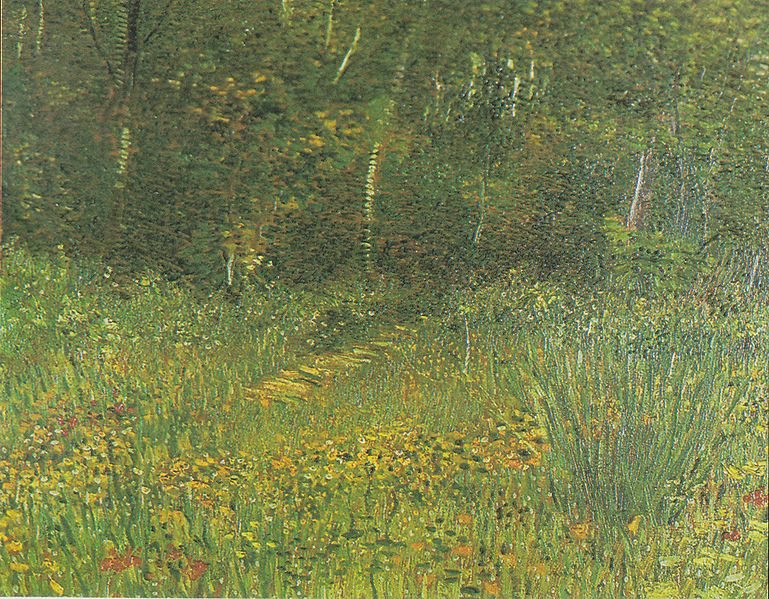

.jpg)

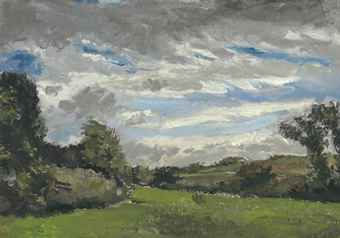
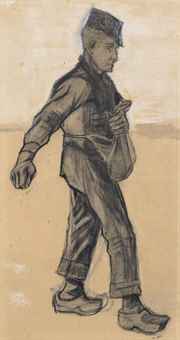
.jpg)
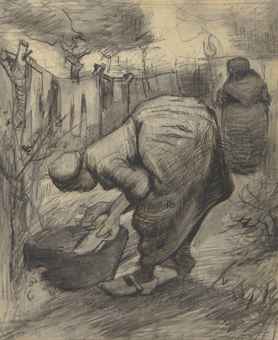
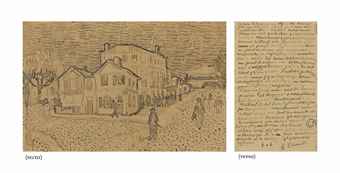
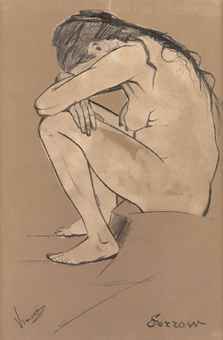
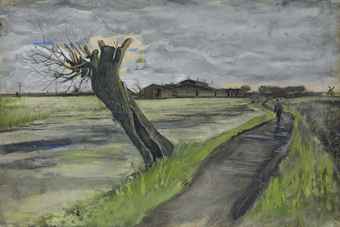
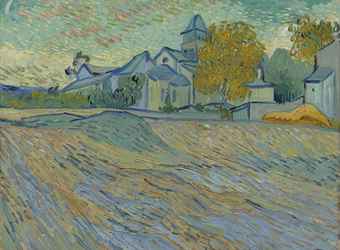
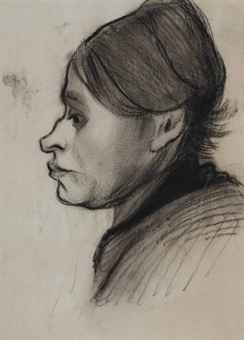
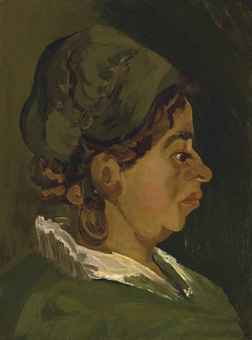
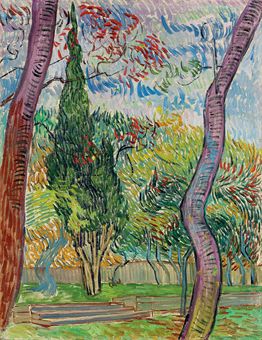
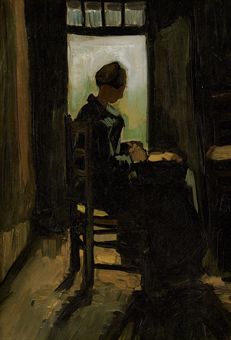
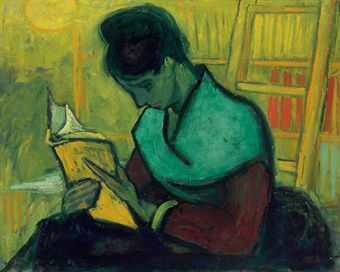
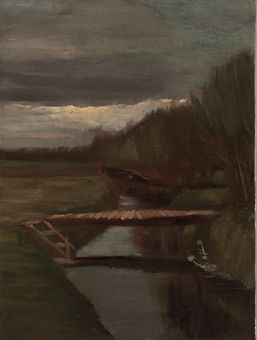
.jpg)
